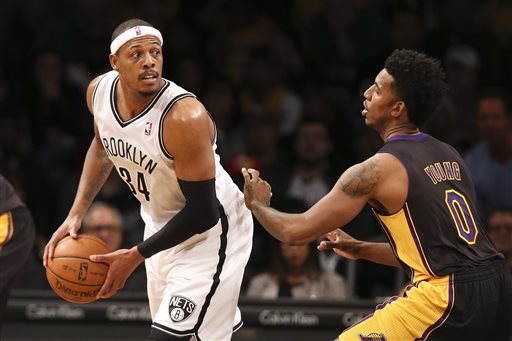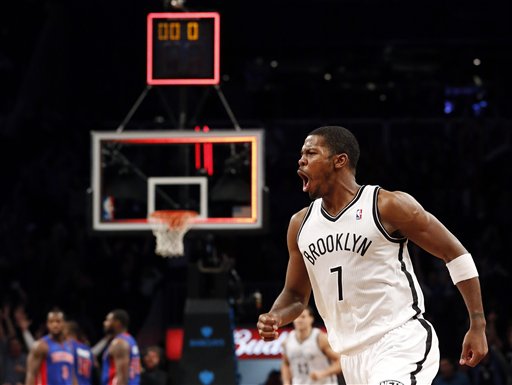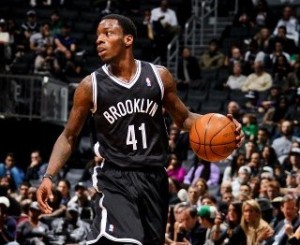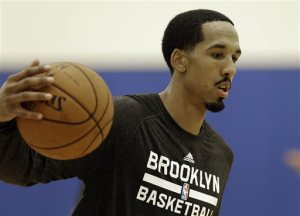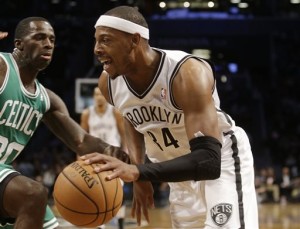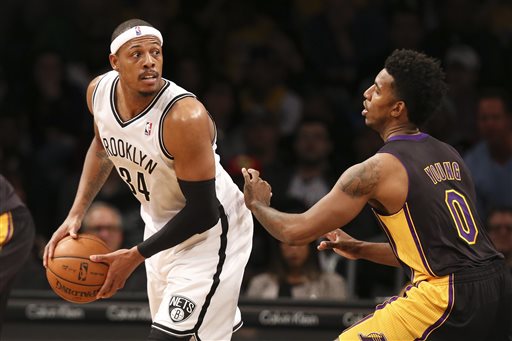
The Brooklyn Nets began their first winning streak Tuesday night, defeating the Boston Celtics 104-96 and enjoying dominant performances from Deron Williams and Brook Lopez. But the most interesting performance was a player who didn’t even start and finished with just four points: Paul Pierce.
Pierce, wearing a protective glove on his hand, came off the bench for the first time in six years and just the third time in his illustrious sixteen-year career. He didn’t make a shot in 22 minutes, but recorded four free throws, seven rebounds and three assists, including this nifty pass to Andray Blatche in the first quarter. “It’s just a different mental approach to the game,” Pierce said of his new role. “You’ve got to be ready when your number’s called, and that’s what I’m trying to do.”
The Nets traded for Pierce in July to be their starting small forward, but there’s been a few things written about the future Hall of Famer potentially coming off the bench for this team in recent weeks. The murmurs have been exacerbated by his struggles in the middle of November, the comfort of Alan Anderson with the team’s core 5 (he shot 6-7 from the field last night as a starter), and the potential of Andrei Kirilenko’s return from back spasms.
It’s a real possibility. Though Nets coach Jason Kidd wants to get Pierce more playing time than the 22 minutes he saw tonight, he didn’t rule out bringing Pierce off the bench. “I liked what I saw, I liked him being a leader of that second group,” Kidd said in the press room after the game when pressed about Pierce as a sixth man. “Will I stay that way? I don’t know. We’ll look at the video tomorrow as a team, as coaches, but I’ll talk to Paul and see what his comfort level is.”
[gravityform id=”27″ name=”Pierce” title=”false” description=”false”]
We also spoke about it on YES Network’s #BKConnect, in a segment about Pierce & Joe Johnson coexisting. The combination of those two similar scorers is another driving force that’s pushing Pierce to the bench. With more space to operate and less onus to share possessions, Johnson scores almost twice as much when Pierce is on the bench, shooting far better from the floor:
Can’t see the chart above? Refresh the page. Still can’t see it? Click here for the non-interactive image.
Mostly because of his improved shooting, Johnson’s basic production also skyrockets with Pierce out of the game:
Can’t see the chart above? Refresh the page. Still can’t see it? Click here for the non-interactive image.
It’s nearly impossible to play all 48 minutes switching between Pierce and Johnson. The two will have to see some time together. But the early evidence would indicate that Johnson’s better off without trading possessions with Pierce.
(Interestingly enough, the reverse hasn’t been true: Pierce has shot just 1-15 (6.7%) from three-point range with Johnson on the bench, as opposed to 14-42 (33.3%) with Johnson in the game. It’s a much smaller sample since Pierce was injured, but still something worth keeping an eye on.)
There’s a couple of caveats that come with the Pierce benching question. While any coach or player will tell you that there’s a different mentality that comes with providing a bench spark, they’ll also tell you that it’s not who starts the game so much as who finishes it.
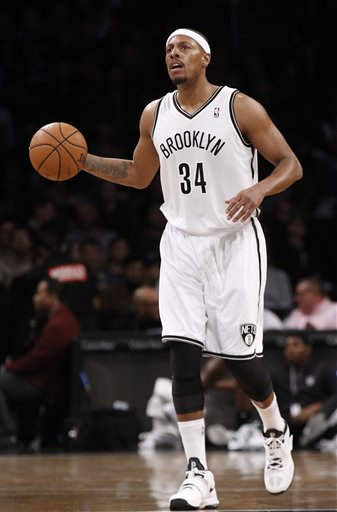
So to ask if Paul Pierce would “come off the bench” is a bit of a misnomer, even though that’s how the problem’s framed. The better question is, is Pierce willing — and able — to play a more significant role with the team’s lesser players?
It appears he’s not Allen Iverson. Unprompted, Pierce told reporters Monday during the team’s practice that he’d be willing to come off the bench if it would help the team, and reiterated that after Tuesday night’s win over his former team.
“(I can) provide leadership, whether it’s in the starting lineup or the bench, and I thought off the bench, I could be a leader for the second unit … I’m willing to do whatever,” Pierce said after Tuesday’s win. “If you approach the game looking at the big picture, it’s all about team, it’s all about winning. If that’s what’s best for the team, so be it.”
So it appears Pierce has little issue with being the bigger fish in the smaller pond. Considering the team’s recent success, It’s worth seeing if the team continues to succeed with Anderson in the starting unit, and perhaps Kirilenko if he returns fully healthy. (Side thought: Alan Anderson was the last Nets player signed to a contract this offseason. So that worked out.)
If that’s true, the problem then becomes if he’s comfortable staying on it if that’s what Kidd decides, particularly at the end of close games.
While Pierce may answer that question the same way — doing what’s best for the team, wanting to win, looking at the big picture — it remains to be seen if Pierce, one of the league’s premier crunch-time scorers in the last decade, will approach sitting with the same levelheadedness if the team begins losing again.

